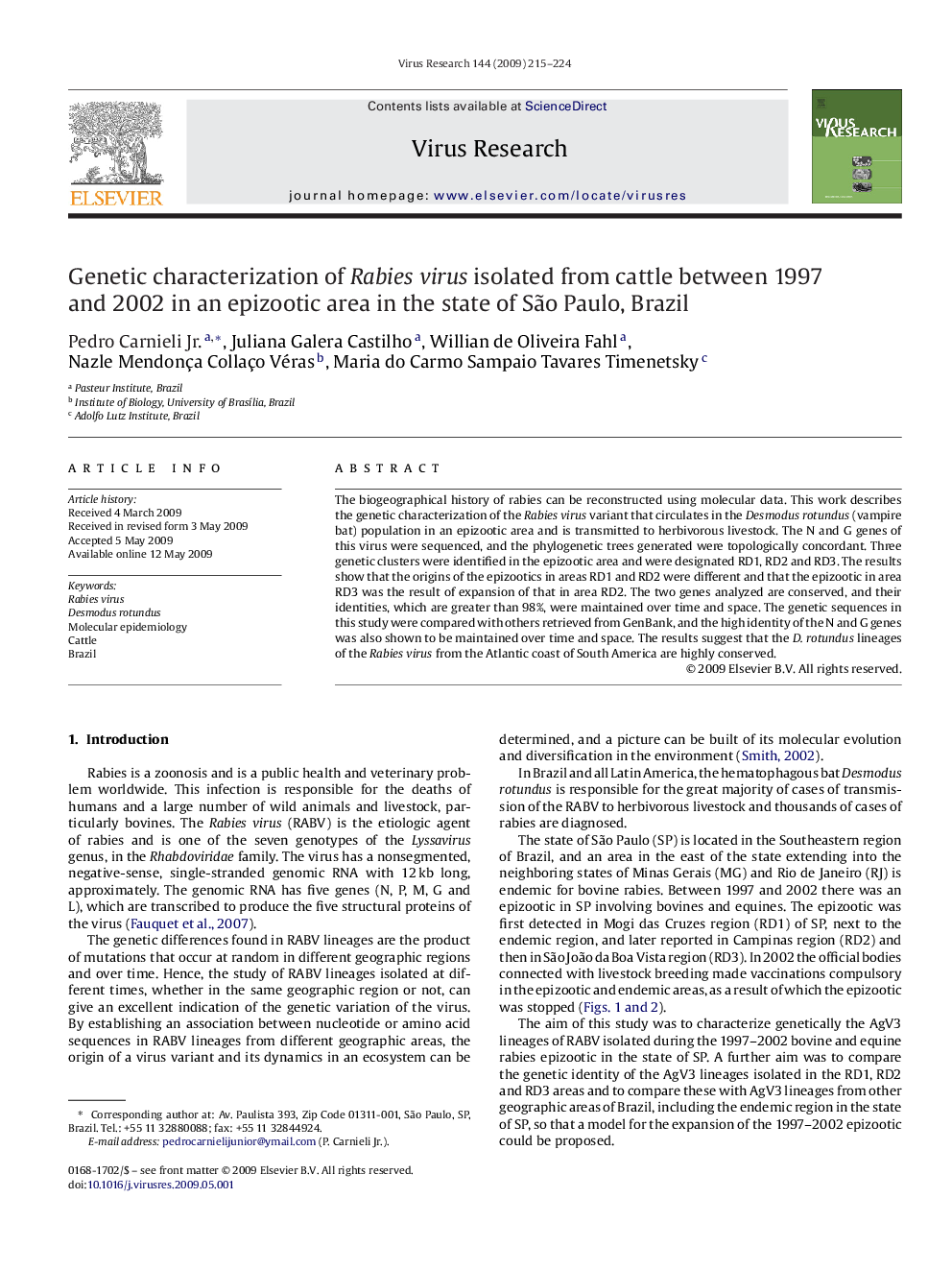| Article ID | Journal | Published Year | Pages | File Type |
|---|---|---|---|---|
| 3429680 | Virus Research | 2009 | 10 Pages |
The biogeographical history of rabies can be reconstructed using molecular data. This work describes the genetic characterization of the Rabies virus variant that circulates in the Desmodus rotundus (vampire bat) population in an epizootic area and is transmitted to herbivorous livestock. The N and G genes of this virus were sequenced, and the phylogenetic trees generated were topologically concordant. Three genetic clusters were identified in the epizootic area and were designated RD1, RD2 and RD3. The results show that the origins of the epizootics in areas RD1 and RD2 were different and that the epizootic in area RD3 was the result of expansion of that in area RD2. The two genes analyzed are conserved, and their identities, which are greater than 98%, were maintained over time and space. The genetic sequences in this study were compared with others retrieved from GenBank, and the high identity of the N and G genes was also shown to be maintained over time and space. The results suggest that the D. rotundus lineages of the Rabies virus from the Atlantic coast of South America are highly conserved.
